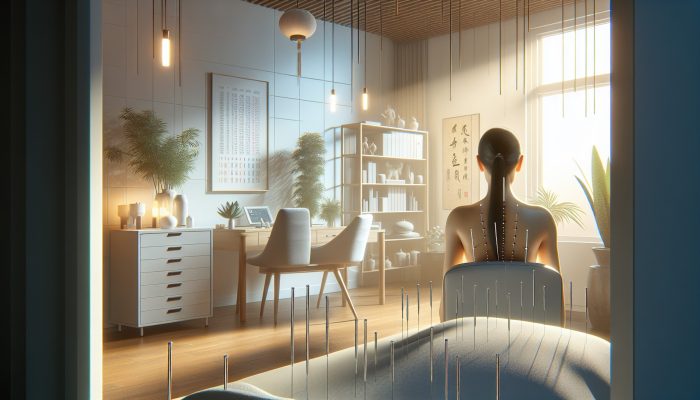Comprehensive Insights into Liver Blood Tests for Optimal Health
Understanding the Importance of Liver Blood Tests for Your Health

Liver Blood Test in Ashford: A liver blood test is a vital diagnostic tool that assesses various proteins, enzymes, and other vital substances in your bloodstream, offering essential insights into your liver health. This test plays a crucial role in identifying a range of liver diseases and evaluating the liver’s functional capacity. By analyzing these components, healthcare professionals can measure the liver’s efficiency in performing essential tasks such as detoxification, protein synthesis, and bile production. Furthermore, a liver blood test can reveal indications of liver inflammation or injury, potentially due to conditions like hepatitis, fatty liver disease, or cirrhosis.
The liver is integral to numerous metabolic functions within the body, rendering it essential for individuals, particularly those with risk factors such as alcohol consumption, obesity, or a familial predisposition to liver disorders, to undergo regular health evaluations. Deciphering your liver blood test results is paramount for making informed health choices. Moreover, early detection and proactive management can dramatically enhance outcomes for individuals facing liver-related challenges.
Explore the Different Types of Liver Blood Tests Available
Liver function tests encompass a diverse array of specific evaluations, each concentrating on distinct facets of liver health and functionality. Among the most prevalent tests are alanine aminotransferase (ALT), aspartate aminotransferase (AST), alkaline phosphatase (ALP), bilirubin, and albumin tests.
- ALT: This enzyme is predominantly located in the liver, and elevated ALT levels may signal potential liver cell damage.
- AST: Found in multiple tissues, heightened AST levels can indicate inflammation or damage to the liver.
- ALP: Increased ALP levels may suggest bile duct obstruction or underlying liver disease.
- Bilirubin: Elevated bilirubin levels can result in jaundice and may point to liver dysfunction.
- Albumin: This protein produced by the liver, when found in low concentrations, may indicate chronic liver disease.
Each of these tests provides critical insights into liver functionality, collectively offering a comprehensive overview of liver health. Grasping the significance of these tests can foster constructive dialogues with your healthcare provider regarding your liver condition.
Determining the Frequency of Liver Blood Tests for Optimal Monitoring
The frequency of liver blood tests is largely contingent on your overall health and specific risk factors. For individuals already diagnosed with liver ailments or those with a family history of liver conditions, more frequent evaluations may be warranted. Conversely, individuals without apparent risk factors may only require testing during routine health check-ups. Your healthcare provider can assist in formulating a personalized testing schedule that aligns with your unique health necessities.
For populations at higher risk, including those with diabetes, obesity, or excessive consumption of alcohol, regular liver function assessments are highly advisable. These tests facilitate the early detection of liver damage, enabling timely intervention. Consistent testing also aids in monitoring the effectiveness of lifestyle changes or therapeutic treatments aimed at improving liver health. Always consult your healthcare provider to establish a testing regimen that caters to your specific requirements.
Essential Preparations for Your Liver Blood Test

Key Preparations Needed Before Undergoing the Test
Proper preparation for a liver blood test is vital for ensuring accurate and reliable results. Fasting may be necessary prior to certain tests, usually for a minimum duration of 8 hours. It’s also advisable to abstain from alcohol consumption in the days preceding the test, as this can significantly skew results. Additionally, some medications may need to be temporarily discontinued, making it crucial to adhere to any specific instructions provided by your healthcare professional.
Being well-informed about these preparatory requirements can alleviate anxiety, ensuring a seamless testing experience. If you have uncertainties regarding any aspect of the preparation, do not hesitate to reach out to your healthcare provider for clarification. This proactive approach will bolster your confidence and ensure that you feel adequately prepared for your liver blood test.
What to Expect During the Liver Blood Testing Procedure
The procedure for conducting a liver blood test typically involves drawing a small blood sample from a vein in your arm. This process is quick and usually causes minimal discomfort. A healthcare professional will begin by sanitizing the area, applying a tourniquet to engorge the vein, and then inserting a needle to collect blood into a vial. The entire procedure generally takes less than five minutes.
Once the blood sample is obtained, it will be forwarded to a laboratory for extensive analysis. Laboratory personnel will evaluate the sample for various enzymes and proteins, providing critical insights into your liver health. Familiarizing yourself with the testing process can help reduce some of the anxiety associated with blood tests, allowing you to concentrate on the significance of the results rather than the procedure itself.
Next Steps After Your Blood Sample Is Collected

After your blood sample has been taken, it will be sent to a laboratory for comprehensive analysis, where various tests will be conducted to evaluate liver function. Typically, results from liver blood tests are available within a few days, although this timeframe can vary based on the specific facility. Upon completion of the analysis, your healthcare provider will review the results with you, offering insights into your liver health and outlining any necessary follow-up actions.
In certain instances, abnormal results may necessitate further testing or lifestyle modifications to address underlying health concerns. Your healthcare provider will guide you through these subsequent steps, ensuring that you understand the implications of the results for your health. It is vital to ask questions and clarify any uncertainties during this discussion, as it can significantly influence your health management and future decisions.
Interpreting Your Liver Blood Test Results for Better Health
Understanding Normal Liver Blood Test Results
Normal liver blood test outcomes indicate that your liver is functioning optimally, typically falling within established reference ranges. However, these ranges can vary slightly across different laboratories, making it crucial to discuss your specific results with your healthcare provider. Normal levels of ALT, AST, and ALP generally suggest no significant liver damage or disease.
Grasping what constitutes a normal range empowers you to take charge of your health. For instance, ALT levels are generally deemed normal when below 40 units per liter; however, this threshold may vary based on age, sex, and other factors. Your healthcare provider can clarify the nuances of your results and help you understand their implications for your overall wellness.
Implications of Abnormal Liver Blood Test Results
Abnormal liver blood test results can signify liver damage or disease. Elevated levels of specific enzymes or proteins may indicate various conditions that require further investigation. For instance, a significantly high ALT level could suggest acute liver injury, while increased ALP might point to cholestasis or bile duct obstruction.
Recognizing the potential implications of abnormal results is crucial for timely intervention. Depending on the context of your results, your healthcare provider may recommend additional tests, imaging studies, or referrals to specialists. It is essential to approach these discussions with openness and a willingness to explore all potential avenues for treatment or lifestyle modifications.
Effectively Discussing Your Liver Blood Test Results with Healthcare Professionals
Preparing for a discussion about your liver blood test results can significantly enhance your understanding and decision-making process. Begin by jotting down any questions or concerns you may have regarding the results. Additionally, be sure to disclose any symptoms you might be experiencing or changes in your health that are concerning you. This proactive approach will enable your doctor to provide tailored advice and appropriate follow-up actions.
Do not hesitate to ask about the implications of the results concerning your current health, potential treatments, or necessary lifestyle changes. Understanding your liver health is a collaborative endeavor, and maintaining open communication with your healthcare provider can greatly enhance your care. This dialogue can empower you to make informed decisions regarding your lifestyle and health management moving forward.
Effective Lifestyle Changes to Enhance Liver Health
Implementing lifestyle modifications can significantly bolster liver function and promote overall health. Embracing a nutritious diet, reducing alcohol intake, and engaging in regular physical activity are fundamental steps that can yield substantial benefits for liver health. Discuss specific changes with your doctor based on your test results, as personalized recommendations can provide the most effective guidance.
- Adopt a Balanced Diet: Focus on a diet abundant in fruits, vegetables, and whole grains.
- Limit Processed Foods: Reduce consumption of high-sugar and high-fat products.
- Stay Hydrated: Ensure adequate fluid intake to assist the body in detoxification.
- Engage in Regular Exercise: Aim for at least 150 minutes of moderate-intensity physical activity each week.
- Avoid Alcohol: Limit or completely abstain from alcohol consumption to prevent potential liver damage.
By incorporating these changes into your daily routine, you can significantly improve your liver health. Regular monitoring through liver blood tests can help assess the impact of these lifestyle adjustments, providing you and your healthcare provider with invaluable insights into your progress.
Expert Insights on Liver Blood Tests in Ashford
Common Liver Conditions Diagnosed Through Blood Tests
Routine liver blood tests can unveil several prevalent liver conditions that might otherwise go unnoticed. Early detection of these conditions can lead to improved management and better health outcomes. The most frequently identified conditions include:
- Hepatitis: Inflammation of the liver, often caused by viral infections.
- Fatty Liver Disease: Excess fat accumulation in the liver, which can potentially lead to liver damage.
- Cirrhosis: Scarring of liver tissue, typically resulting from chronic damage.
- Liver Cancer: Abnormal cell growth in the liver that poses significant health risks.
Detecting these conditions through liver blood tests facilitates timely intervention and the formulation of appropriate treatment strategies. Prompt identification can greatly enhance the quality of life for affected individuals and diminish the risk of severe complications.
Enhancing Health Outcomes Through Liver Blood Tests
Regular liver blood tests are crucial for improving health outcomes by monitoring liver health, enabling early detection of issues, and informing treatment plans. For individuals with chronic liver conditions, these tests are vital for assessing disease progression and evaluating treatment effectiveness. They also assist in customizing lifestyle changes based on test results.
To maximize the benefits of liver blood tests, individuals can undertake actionable steps focused on lifestyle improvements. This may include dietary adjustments, increased physical activity, and adherence to prescribed medications. Consistent follow-ups with healthcare providers can help track progress and ensure timely modifications to treatment plans.
Recommendations from Experts on the Frequency of Liver Blood Tests
Experts recommend determining the frequency of liver blood tests based on individual risk factors and overall health status. For those with existing liver disease or risk factors like obesity, diabetes, or a history of alcohol consumption, more frequent testing may be advisable. Conversely, individuals without risk factors may only require annual testing during routine health evaluations.
Understanding your personal health history and risk factors can significantly influence decisions regarding testing frequency. Engaging in ongoing discussions with your healthcare provider about your liver health is crucial for making informed choices about the timing and nature of the tests necessary. This proactive approach ensures that any potential issues are identified early, allowing for timely intervention.
The Impact of Lifestyle Choices on Liver Health
Exploring the Nutritional Influence on Liver Function
The relationship between diet and liver health is profound and essential. A balanced diet, rich in fruits, vegetables, and whole grains, supports liver function and helps mitigate the risk of liver diseases. Limiting processed foods, sugars, and unhealthy fats is pivotal in preventing conditions like fatty liver disease and other liver-related health concerns.
Incorporating specific foods can further promote liver health. Foods high in omega-3 fatty acids, such as fatty fish and nuts, can help reduce liver inflammation. Additionally, antioxidants found in various fruits and vegetables combat oxidative stress, protecting liver cells from damage. Establishing a diet that prioritizes these elements can significantly enhance liver health over time.
- Include Leafy Greens: They aid in decreasing fat accumulation within the liver.
- Eat Fatty Fish: Rich in omega-3 fatty acids, they provide substantial benefits for liver health.
- Incorporate Nuts: These are a valuable source of healthy fats and antioxidants.
- Consume Berries: High in antioxidants, they help safeguard liver integrity.
The Role of Regular Physical Activity in Enhancing Liver Health
Engaging in regular exercise plays a pivotal role in enhancing liver function. Physical activity helps diminish fat accumulation in the liver and alleviates inflammation. Furthermore, exercise promotes overall health by supporting weight management, controlling blood sugar levels, and improving circulation—factors closely linked to liver health.
For individuals at risk of liver disease or those with existing liver conditions, adopting a consistent exercise regime can be particularly advantageous. Activities such as walking, cycling, and swimming are excellent choices that boost cardiovascular health while also supporting liver function. Setting achievable fitness goals can lead to sustainable changes that significantly enhance liver health over time.
Understanding the Effects of Alcohol Consumption on Liver Health
Excessive alcohol consumption poses a significant threat to liver health, potentially leading to conditions such as fatty liver, alcoholic hepatitis, and cirrhosis. Alcohol can cause inflammation and damage liver cells, impairing the organ’s ability to function effectively. Moderation or complete abstinence is essential for maintaining liver health, particularly for individuals with pre-existing liver conditions.
Comprehending the impact of alcohol on the liver can motivate individuals to make informed choices regarding their drinking habits. For those who consume alcohol, it is vital to be cognizant of recommended limits and consider regular liver blood tests to monitor liver health. Open discussions with healthcare providers regarding alcohol consumption can offer additional insights and support for healthier lifestyle choices.
Connecting Liver Blood Tests to Other Health Conditions
The Relationship Between Liver Blood Tests and Diabetes Management
Liver blood tests can provide critical insights into liver function for individuals diagnosed with diabetes. Diabetes can adversely impact liver health by increasing the risk of fatty liver disease and liver inflammation. Regular testing is crucial for managing both conditions, as it aids in monitoring liver function and identifying potential complications.
For those with diabetes, maintaining a healthy lifestyle, including a balanced diet and regular exercise, is vital for supporting liver health. Engaging in liver blood tests can also empower individuals to make informed decisions about their health management strategies, ultimately reducing the risk of liver-related complications.
Insights from Liver Blood Tests on Heart Disease Risk
While liver blood tests are not primarily diagnostic tools for heart disease, they can offer valuable insights regarding liver function, which may be influenced by heart conditions. Elevated enzyme levels in liver blood tests can signify stress on the liver caused by heart disease. Recognizing this connection underscores the importance of comprehensive health assessments that consider both liver and heart health.
For individuals at risk of both liver and heart disease, regular testing is advisable. Collaborating with healthcare providers to discuss the implications of liver blood test results can help create a holistic health management approach that addresses the needs of both organs.
Identifying Other Medical Conditions Through Liver Blood Tests
Liver blood tests can also reveal various conditions beyond liver diseases. These tests may identify issues related to thyroid dysfunction, specific infections, and autoimmune disorders, making them an invaluable tool in comprehensive health assessments. Recognizing the broader implications of liver blood tests can empower individuals to seek appropriate care for a range of health concerns.
Being aware of the interconnectedness of liver function with other bodily systems can encourage proactive health management. If abnormalities are detected, healthcare providers can recommend further testing or referrals to specialists to effectively address underlying issues.
The Interconnectedness of Liver and Kidney Functions Highlighted by Liver Blood Tests
Interestingly, liver blood tests can occasionally uncover abnormalities that may suggest kidney issues, given the interconnected roles of the liver and kidneys. The liver is responsible for filtering toxins from the blood, and any dysfunction in the liver can impose increased strain on the kidneys. Thus, liver blood tests can serve as a supplementary tool in assessing kidney health.
For individuals with existing kidney concerns or those at risk, understanding the potential connections between liver and kidney functions is crucial. Regular monitoring through liver blood tests can provide valuable insights into the health of both organs, facilitating timely intervention when necessary.
Accessing Liver Blood Testing Services in Ashford
Where to Obtain a Liver Blood Test in Ashford
If you reside in or near Ashford, you can obtain liver function blood tests at various healthcare facilities, including hospitals, clinics, and private laboratories. Typically, consulting your GP is the first step in acquiring a liver blood test. Your GP can provide a referral to an appropriate facility or arrange a direct appointment for you.
Several private healthcare providers in Ashford also offer liver blood testing services, often with shorter wait times compared to NHS facilities. It is essential to explore your options and choose a facility that meets your needs for both convenience and reliability.
Understanding the Costs Associated with Liver Blood Testing in Ashford
The costs associated with liver blood tests in Ashford can vary significantly, depending on whether you opt for NHS services or private healthcare. NHS tests are generally free at the point of use for eligible patients, while private tests can range from £50 to £150 or more, depending on the specific tests being performed.
Discussing costs and coverage with your healthcare provider will facilitate informed decisions about your testing options. Understanding your financial responsibilities upfront can alleviate any anxiety regarding the testing process.
Expected Waiting Times for Liver Blood Tests in Ashford
Waiting times for liver blood tests in Ashford can fluctuate based on the facility and the urgency of the test. NHS services may experience longer wait times due to high demand, particularly in populated areas. Conversely, private facilities often provide quicker access to testing, with results sometimes available within 24 hours.
It is advisable to inquire about estimated waiting times when scheduling your blood test, especially if you have specific health concerns that require prompt attention. Knowing what to expect can help you plan accordingly and reduce any associated anxiety.
Frequently Asked Questions Regarding Liver Blood Tests
What is the significance of a liver blood test?
A liver blood test assesses various substances in the bloodstream to evaluate liver health and diagnose potential liver diseases.
How often should I undergo a liver blood test?
The frequency of testing is contingent upon individual risk factors and health status. Consult your doctor for a personalized schedule tailored to your needs.
What do normal liver blood test results signify?
Normal results typically indicate healthy liver function, with specific enzyme levels falling within established reference ranges.
What preparations are necessary before a liver blood test?
You may need to fast for at least 8 hours prior to the test and avoid alcohol and certain medications as directed by your healthcare provider.
What occurs post-liver blood test?
Your blood sample will undergo analysis in a laboratory, with results typically available within a few days. Your doctor will discuss the findings with you.
Can liver blood tests identify liver disease?
Yes, liver blood tests can detect various liver diseases by measuring enzyme levels and other relevant substances.
What lifestyle changes can I implement to enhance liver health?
Maintain a balanced diet, stay adequately hydrated, exercise regularly, and limit alcohol consumption to effectively support liver health.
Are liver blood tests relevant for diabetes management?
Yes, liver blood tests can help monitor liver function in individuals with diabetes, as diabetes can negatively affect liver health.
How can liver blood tests shed light on kidney function?
Liver blood tests can sometimes reveal abnormalities that may indicate kidney issues due to the interconnected roles of the liver and kidneys.
Where can I access liver blood testing services in Ashford?
Liver blood tests are available at various healthcare facilities in Ashford, including hospitals, clinics, and private labs. Consult your GP for referrals.
Connect with us on Facebook!
This Article Was First Found On https://bloodtest.co.uk
The Article Liver Blood Test: Your Essential Guide in Ashford Was Found On https://limitsofstrategy.com




























